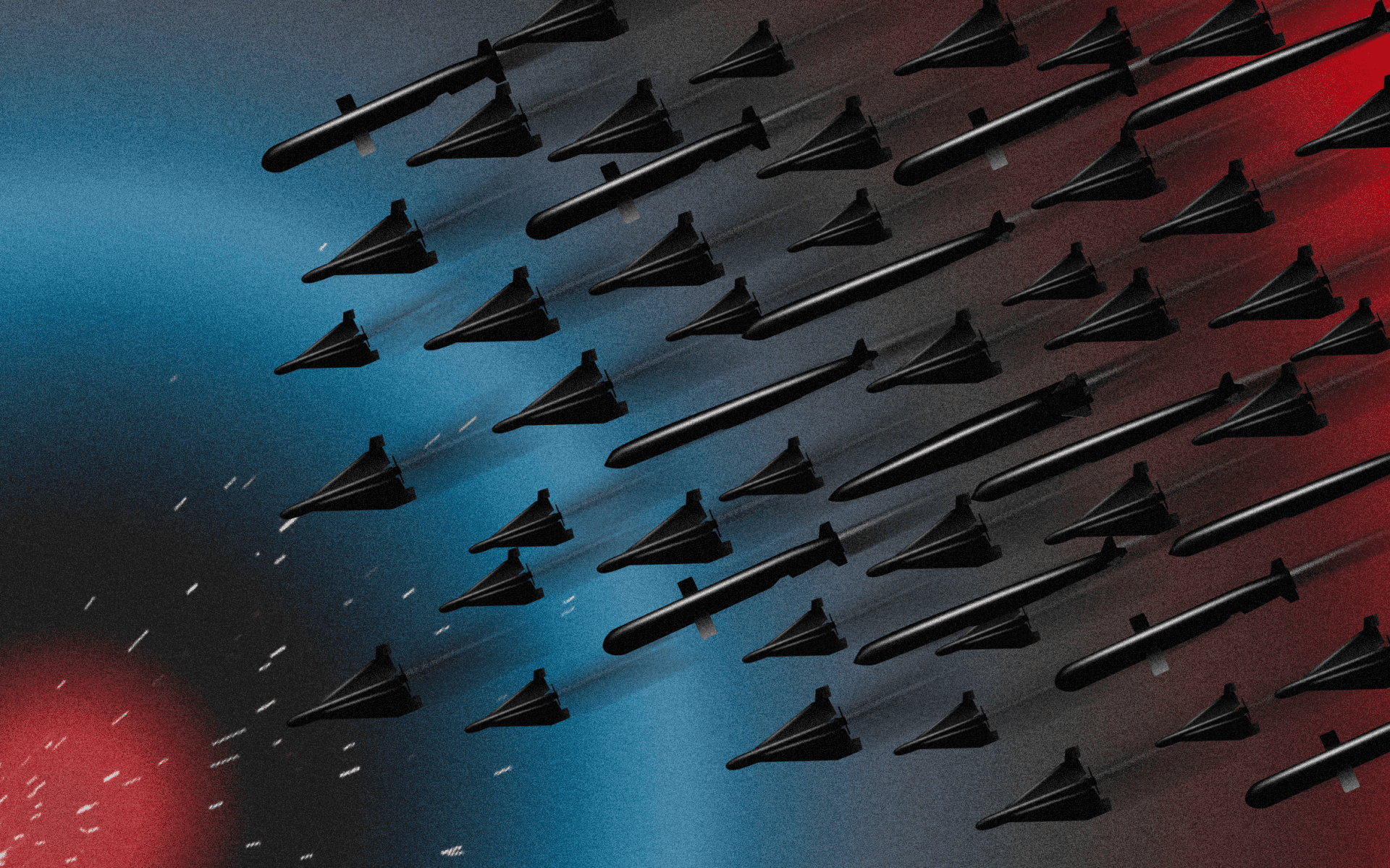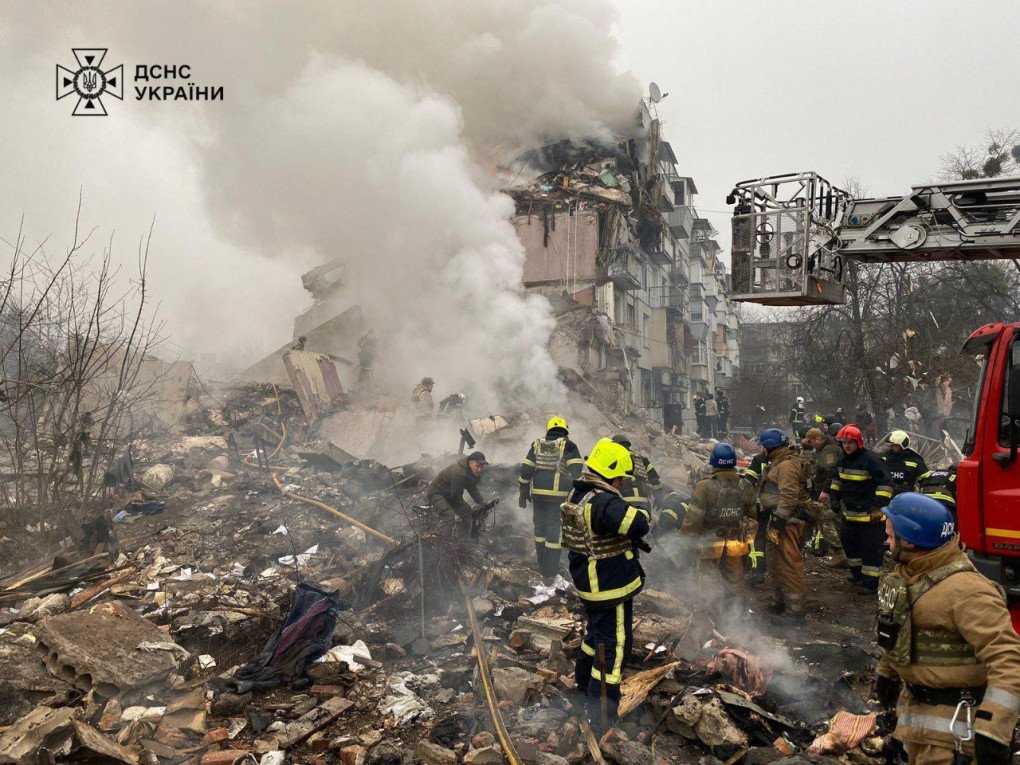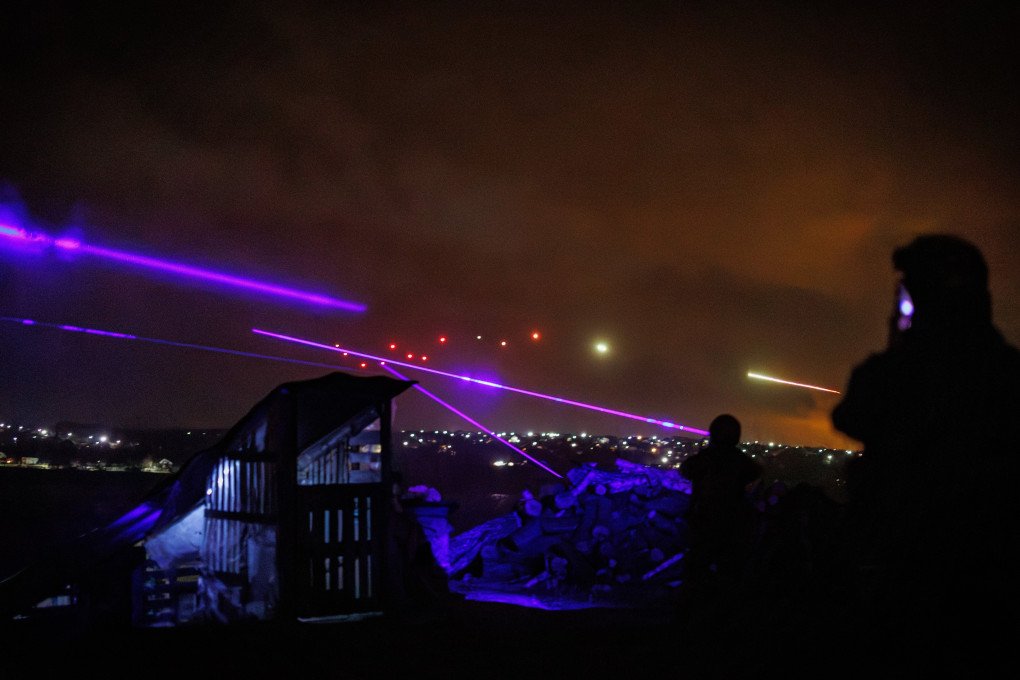- Category
- War in Ukraine
How Russia Weaponized the Trolley Problem Against Ukraine’s Air Defenses

When a Russian missile or drone enters Ukrainian airspace, air defense operators have just seconds to act. Take the shot, and falling debris might hit homes. Wait too long, and the missile might strike a school, a hospital, or a city center. Every decision is a moral gamble—and Russia knows it.
Since the first day of Russia’s full-scale invasion, Ukraine’s airspace has been flooded with deadly aerial threats: fast-moving ballistic missiles, low-flying and hard-to-detect cruise missiles, and the ever-present Shahed drones, which drift in on erratic, unpredictable trajectories.
Ukraine’s air defense operators face an immense burden. In an ideal world, they would intercept every aerial threat over empty fields—far from civilian areas. But as Russia floods the skies with a daily barrage of around 100 drones and missiles launched from the north, south, and east, that ideal becomes nearly impossible. The sheer volume and unpredictability make it a chaotic, high-stakes job: intercept everything and try to do it without putting civilians in harm’s way.
It’s reminiscent of the classic trolley problem , which pits passive inaction against active intervention, forcing participants to weigh guilt, responsibility, and sacrifice ethics. And with Russia’s extensive record of deliberately targeting civilian infrastructure, this is a moral dilemma engineered by design—not accident.

Rules of engagement
Air defense crews like those in the “South” Air Command work around the clock—often stationed in forests and fields, far from their families for months at a time. Their decisions happen in seconds, under constant pressure. Oleksandr, commander of an S-300 anti-aircraft missile division that has served in Donetsk, Kharkiv, and Kherson regions, described just how fraught those decisions can be.
“It’s incredibly hard,” he told BBC News Ukraine when asked about predicting where debris might fall. “We have little time to calculate the missile’s trajectory.” Trying to determine whether a missile is headed toward a populated area might cost them the intercept altogether.
“It’s one thing when debris falls,” he said, “and a completely other thing when it’s a missile hitting its target.” In most cases, the incentive is to take the shot as soon as the opportunity presents itself—because that window might not come again before tragedy strikes.
These operators are not working in a legal vacuum. Ukraine’s air defense efforts are shaped by international humanitarian law (IHL), which it adheres to as a party to the Geneva Conventions and their additional protocols. At the core of IHL are three key principles:
Distinction requires that defensive actions be directed solely at military threats—missiles, drones, aircraft—and not at civilians or civilian infrastructure.
Proportionality means that even when targeting a legitimate military objective, the expected harm to civilians must not be excessive in relation to the anticipated military advantage.
Precaution obliges defenders to take all feasible steps to minimize civilian harm—whether that means choosing where to deploy systems or deciding when and where to intercept a threat.
These principles are clear in law, but applying them in real time, under fire, is something else entirely. Operators often have seconds to assess whether an incoming missile is headed for a city, a field, or a school. Waiting too long to act may mean losing the chance to stop it. However, even a successful intercept can still send burning debris into populated areas.
Still, it’s critical to remember what drives this impossible decision-making. These legal and moral dilemmas exist because Russia continues to target Ukrainian cities on a near-daily basis. If the attacks stopped, there would be no need to weigh whether intercepting a missile might cause collateral damage—because there would be nothing to intercept.
The risks of inaction
On April 6, Russian forces launched ballistic missiles at Kyiv, triggering explosions that set buildings ablaze around the capital. These types of missiles can reach the city within minutes, giving Ukrainian air defense teams barely enough time to react.
Intercepting them often requires deploying costly and increasingly scarce Patriot missiles. In this latest strike, a residential home caught fire from the fallout, underscoring a pattern seen across the country: even successful interceptions can scatter dangerous debris into populated areas.
The attack came on the heels of a missile strike on Kryvyi Rih, where Russian killed 19 people—including nine children—and injured more than 70 others. Such mass-casualty events are no longer rare. They happen without warning, often in quick, brutal succession.

In the past week alone, Russia has fired over 1,460 guided aerial bombs, nearly 670 attack drones, and more than 30 missiles at Ukraine, Ukrainian President Volodymyr Zelenskyy stated. This was Russia’s yet another relentless barrage that keeps Ukraine’s air defenders in a constant moral and tactical bind.
Ukrainian air defense units shot down over 4,000 Russian aerial threats in March 2025, the Ukrainian Air Force reported. Among them were advanced cruise missiles like the Kh-101 and Kalibr, a rare ballistic missile intercept, and more than 2,300 Shahed drones.
The skies were so saturated that even reconnaissance and miscellaneous drones numbered in the hundreds. Meanwhile, Ukrainian aviation flew over 580 sorties—ranging from close air support to fighter escorts—underscoring the task of keeping up with Russia’s devastating airstrikes.
Blame as strategy
Russia has engineered a permanent loophole—an excuse it feeds to both the international community and its own people. No matter the outcome of its missile and drone attacks, the blame can always be flipped. If civilians are killed, it’s Ukraine’s fault for defending itself. If debris falls on a building, it's the air defense system to blame. And when casualties mount despite every intercept, Russia points to the very thing saving lives as the source of the danger.
This isn’t just a cynical spin—it’s part of the strategy. By overwhelming Ukraine’s air defenses with sheer volume, Russia forces operators into impossible decisions and then exploits the consequences. It fosters fear and tests public morale.
The reality is much simpler: when air defense wasn’t in place, casualties were much higher. The difference now is that Ukraine can shoot back—to intercept and protect, even if imperfectly.
Some of Russia’s most infamous attacks—on the Mykolaiv regional administration, the residential high-rise in Dnipro, the Okhmatdyt children’s hospital in Kyiv, and now, the latest bloodshed in Kryvyi Rih—underline a pattern. These weren’t accidents or misfires. They were designed to cause maximum civilian harm while seeding doubt about who was responsible.
The trolley problem may be real—but it’s Russia who runs the track.
-c6522ae9e5320af1cc92504c0aaa1b34.png)




-f88628fa403b11af0b72ec7b062ce954.jpeg)
-b63fc610dd4af1b737643522d6baf184.jpg)


-29a1a43aba23f9bb779a1ac8b98d2121.jpeg)

-24deccd511006ba79cfc4d798c6c2ef5.jpeg)